Published on Tuesday, 29 Mar, 2016
Tech Talk at West Thames College
15 years ago, my personal school and Sixth Form experience of being taught anything related to computers (or ‘ICT’ as it was at the time) was at best a mixed experience. Like many my age, I fell into the gap of having an interest and knowing that there was more that could be done with these wonderful grey boxes that lined our classrooms, but being provided instead with a curriculum that wasn’t reflective of what was happening out in the ‘real’ world.
For GCSE we learnt how to use word processors, perform mail merges, and to do basic calculations in Excel – to be business users rather than creators. At home I was teaching myself HTML, CSS and JavaScript, and trying to convince myself I was great at using Paint Shop Pro. To be fair, I do remember that we also spent a couple of lessons drawing shapes with Logo, and we did create some macros using Visual Basic, but programming was never given any context within the curriculum. Why was making this turtle rotate going to be relevant to me outside of a classroom? I mostly enjoyed my time in the lessons, but it all felt very abstract and theoretical rather than something that we could take and build on for ourselves.
My teacher was the exception. Hampered by a dull national curriculum, she was happy to engage outside of the standard lesson plans and content, and I have some vivid memories of her encouraging another girl to build their own PC to gain experience, and us discussing tables vs CSS for layout. Sadly, her professionalism meant that she felt it was important to go back into industry every few years to ensure that her knowledge stayed relevant and first-hand, and when I was doing A-level IT we lost her to this. To this day I’m not sure what prompted my school to appoint her replacement (a promotion for the young, socially inept sysadmin to become teacher was an unpopular choice) – whether it was lack of candidates, budgetary, or something else. It was a huge failure. Our new teacher appeared terrified by the classroom of young women before him, seemed only capable of following textbooks to the letter, and jumped between a quiet, nervous stammer and snapping, presumably because of communication frustrations. I wasn’t learning, and as a very academic student I made the decision that I’d be better off spending my lessons in the library reading my textbook and researching online, which I did for the rest of the year. Don’t worry folks, I got an A and there’s a happy ending about hard work in the face of adversity paying off here, rather than encouraging skipping classes.
This experience, along with my time at university on an early ‘Internet Computing’ course, is one that has really shaped my views on how best we can support younger generations who are interested in design, development, or any of the huge range of disciplines that many aren’t aware even exist as an option to them. As such, when I was put in touch with Sarah Hoyle from Together We Create, I was extremely interested in hearing more about her work of running workshops in schools and colleges, and the programme that she was putting together – Tech Talk.
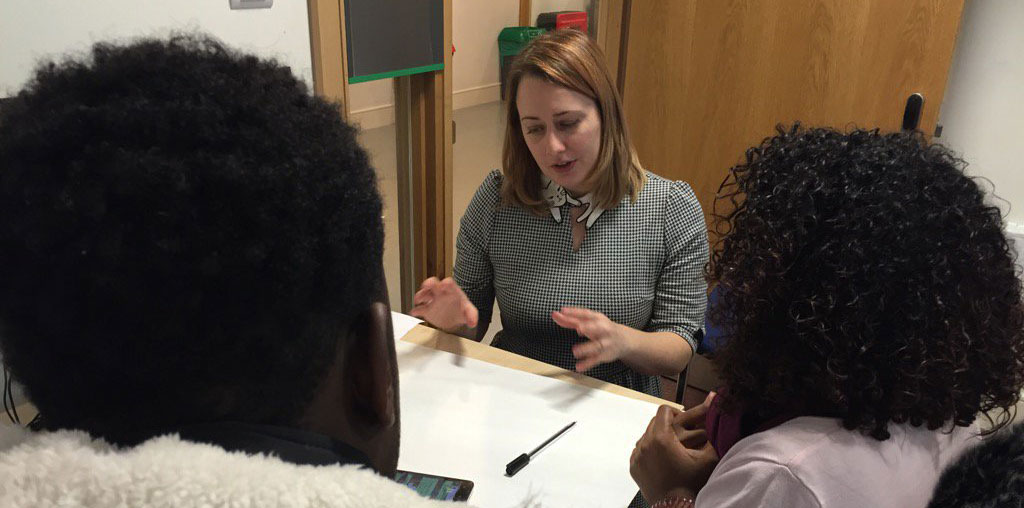
The plan
In Sarah’s words…
With our world becoming more and more app-centric, we wanted to run a project that not only teaches skills in apps and app development, but also inspires people to develop apps that can support the wider community.
Speaking to Sarah was great and cemented my interest in the project as something that I could really get behind. There was a loose outline of a set of lesson plans, and the idea was that myself and other industry experts would each lead a session individually or as a group, and that together we’d take the students through something resembling a real project over a series of weeks.
As we only had a small amount of time in the scheme of things we had to be quite smart about what was realistic – as much as the students (and many of us!) all wanted to dive in and start coding, we wanted to ensure that they didn’t start with half-considered ideas and later run out of time and end up with just a half-built navigation and some forms that do nothing. We also felt it was valuable for them to get a sense of other aspects of projects that may not always be taught. As such we ended up with the following schedule for the weeks, loosely following the Apps for Good structure:
- An introduction to Tech Talk
- Idea generation and screening, personas
- Scoping
- Product prototyping & development
- Pitch
- Evaluation
The students would eventually be pitching to a team including Sarah, one of the experts, and representatives from the local council, with a view to getting funding to support further development of their concepts.
My sessions were to be Scoping, and Product Development, the latter of which I’d be running alongside two of the other experts – Adam Hoyle and Jonathan Trout. Each were to run for half a day at the College.
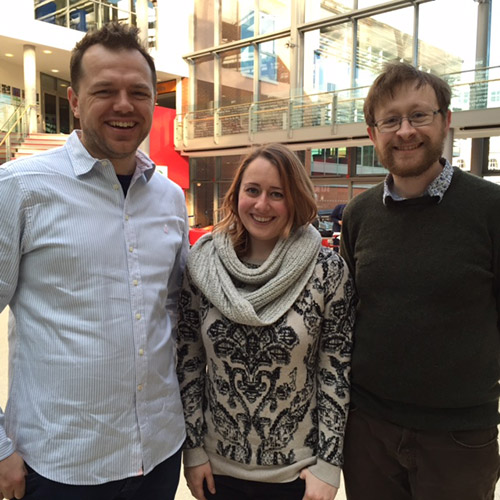
Scoping
My first session was at a good point. Word had been spreading, and attendance had been rising each week. The students all had some concepts that they had decided on previously, so the goal of this session was to help them refine these and to prioritise the key features that would make up the final product concept.
We kicked off with an introduction. At the start of each session Sarah had wanted the professionals to talk a bit about ourselves, our backgrounds, and what we do now. It turns out that starting your own company was of interest to a few, and I got some more questions about this at the end.
The session then moved on to looking at what we’d be doing that day. I opened by explaining the concept of divergent and convergent thinking, and saying that the first bit of the day would be very divergent. They had ideas in mind, but I wanted them to explore these further, and to capture everything without constraints.
We then started looking at how to capture what the app should do, and explored the different ways that people can communicate requirements, including what user stories are. Leaving a reference slide on screen, and specifically referencing the persona work that they’d done previously, I asked them to start to write down what their audience(s) could be doing with the app.

This exercise was something that I thought would be pretty straightforward, but it highlighted something that I’d taken for granted – some of the students weren’t able to think about their apps in terms of functionality or discrete goals and tasks, instead lumping together concepts more broadly. They hadn’t necessarily thought about how it would work beyond a single lofty concept. With a couple of people it took some real work to get them to drill down into thinking about how someone may interact with their future product, rather than operating at a level that was more akin to a bit of marketing blurb about what it was.
Once we had a set of features, we then moved into refining the ideas. One of the important elements that I wanted the students to understand was in the real world, we have constraints. These may be budgetary, they may be skill-based, they may be that we need to ship something quickly and built on it later. I wanted them to understand that there are tradeoffs in terms of costs and benefits, and that being able to consider all of these aspects is a really important skill to learn.
I started off, as all good teachers do, with a trick question – “how long would it take to build a checkout process?“. Answers ranged from minutes to months, and a few astute students said they couldn’t give an answer and needed more information. We discussed that there are usually different ways to do things, different factors that impacted on timings, and that estimating is hard!
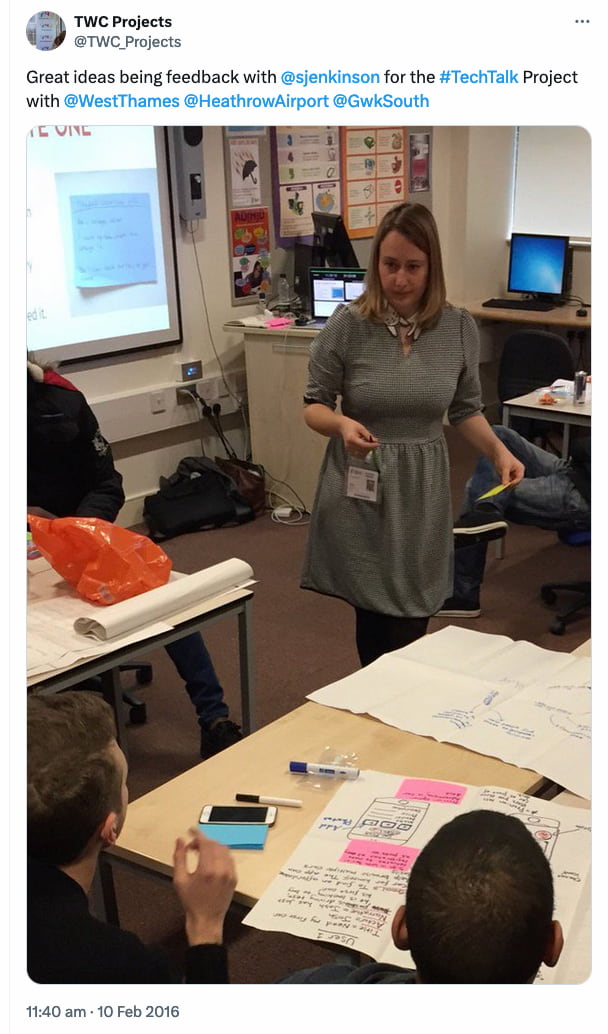
In order to get them thinking deeper about their product plans, we did a relative sizing exercise where the feature cards were placed in a line in order of the perception of complexity and grouped into t-shirt sizes. Many cards were high level, so it prompted some further discussions about breaking them down and further definition that was needed. We then did a quick dot voting exercise, considering the features, their importance, and their complexity, again to reiterate that you can’t always have everything you want, all at once!
To finish off, we quickly touched on how this can translate through into managing project activity, different sprints, working out roughly what’s realistic for time/budgets, and keeping a backlog.
Product prototyping & development
The second session that I was involved in was a chance to take the scope that we’d put together, and to start thinking about putting together something that the students could demonstrate back to the panel at the end.
Jonathan kicked off the session by talking through his background, getting the students to think about common patterns, and asking them to identify some found within an app of their choice. This led some some laughter when the ‘hamburger menu’ was referenced – a term that as industry professionals we have embraced, but which was ridiculous to the students. We then moved on to an activity where the groups started thinking about sketching out their app ideas, and once they’d finished, asking them to do it again in an entirely different way – patterns are important, but the best ideas aren’t always the first ones.
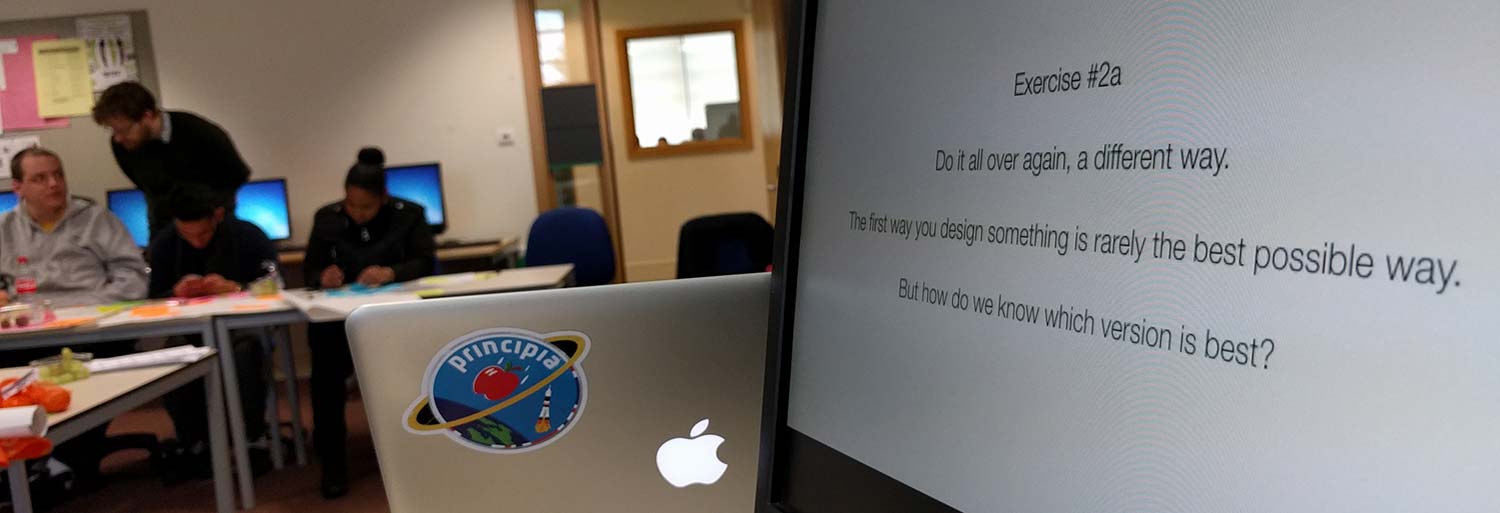
Towards the end of the session we encouraged the students to get their phones out again, and to use POP to start creating interactive prototypes for them to take into their demo session with the panel. The concept of testing was also discussed at this point, although sadly we didn’t have enough time to do any testing activities as part of the lesson itself.
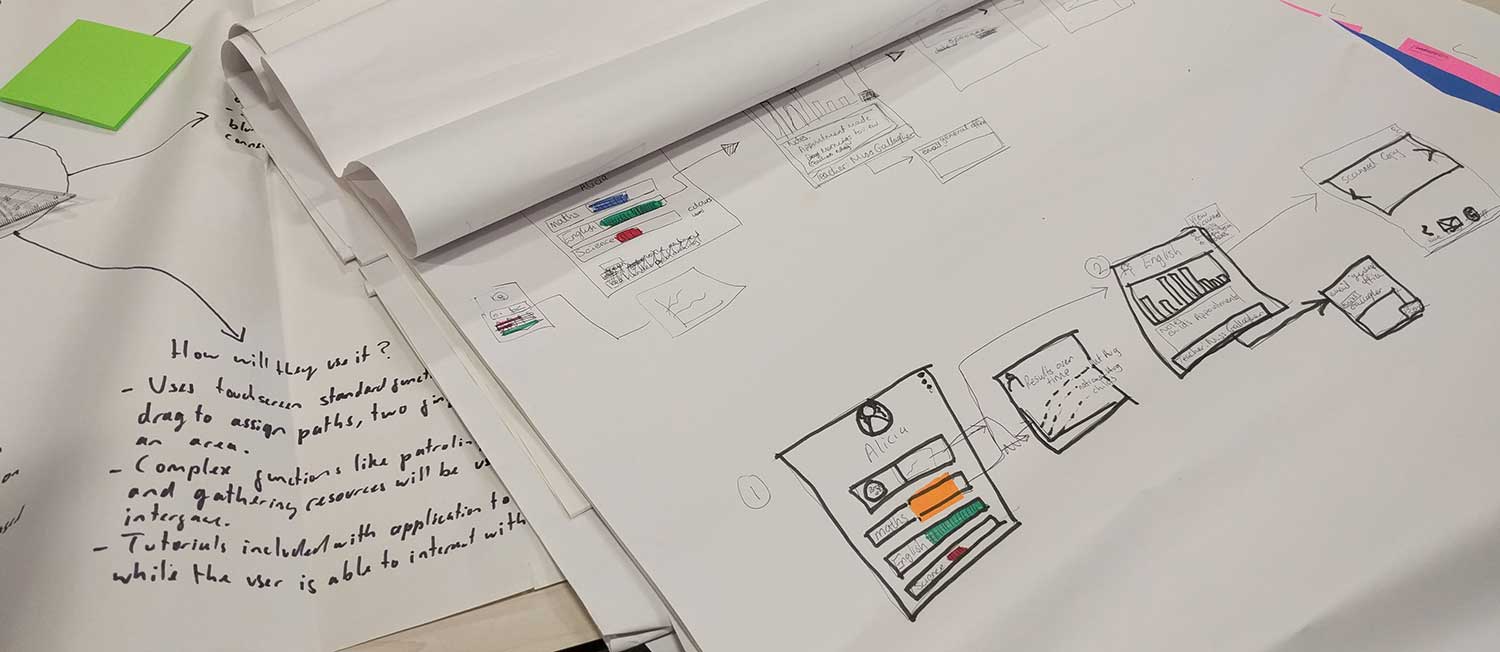
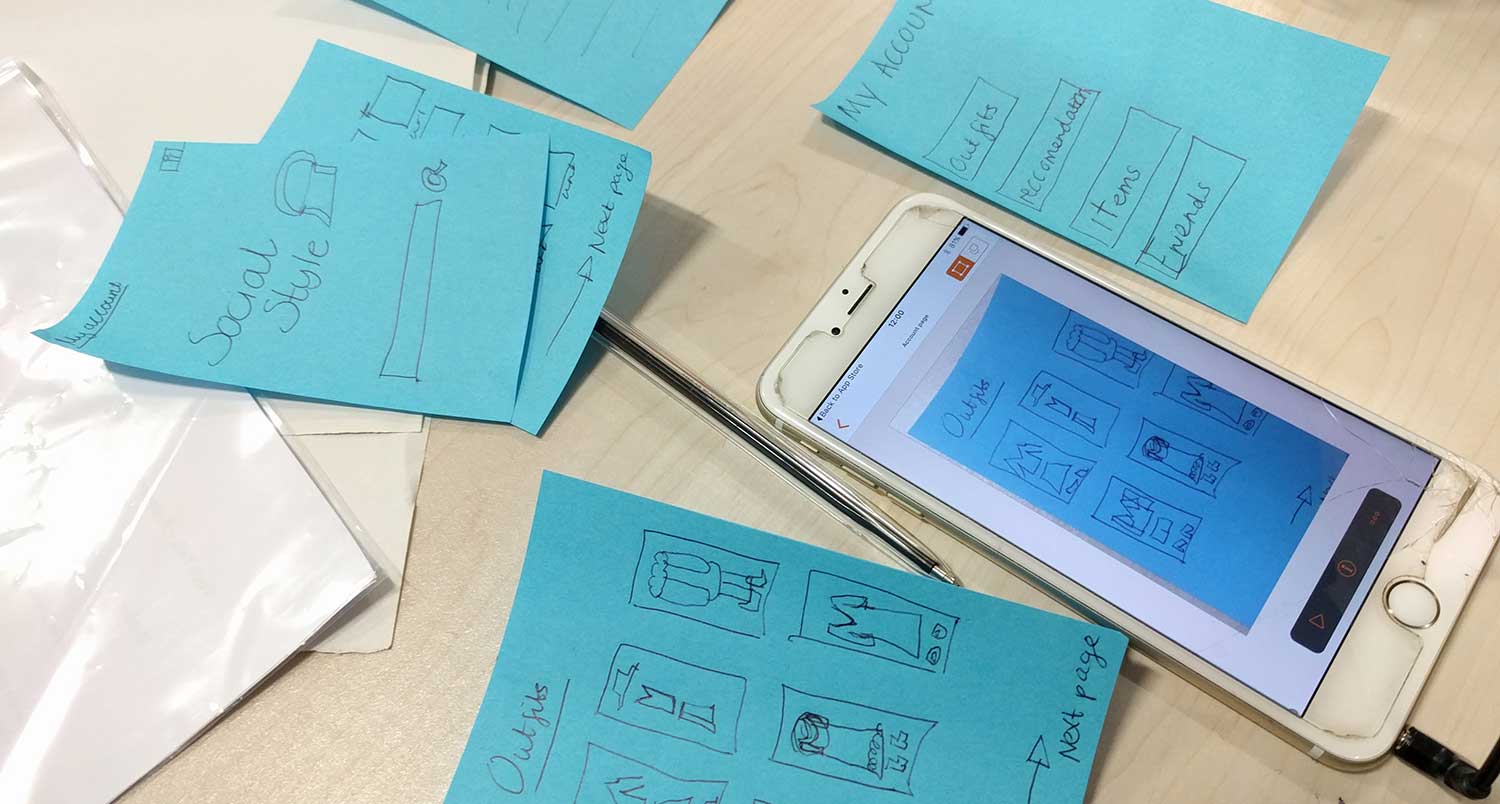
Student feedback
I thoroughly enjoyed my involvement with the lessons, and am so pleased that Sarah asked me to be involved. The icing on the cake was getting our feedback and seeing how much knowledge the students had retained about the sessions and how much they’d enjoyed being a part of it. This, however, was my favourite bit of feedback, and left me coming away with a big smile on my face.
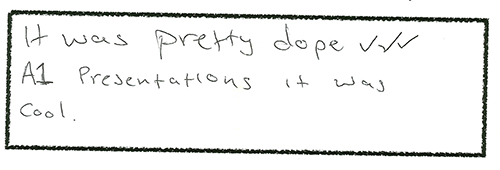
If you’re a college and are looking to do something similar then I’d highly recommend speaking to Sarah to see whether she could put together a similar scheme for you, or you’re very welcome to contact me directly if you’d like to have a chat about something more individual.
Read more from the blog
Back in time:
Digitising traditional industries
Forward in time:
Pokémon Privilege
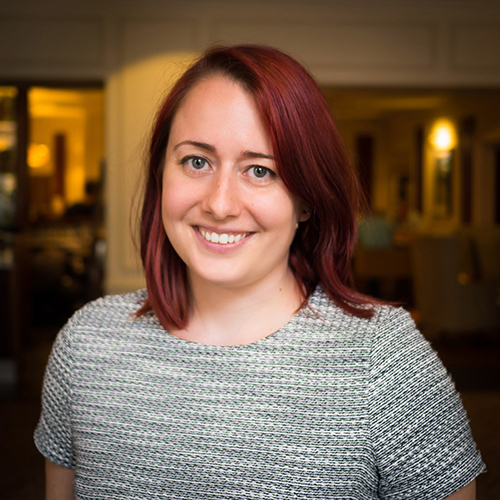 Sally Lait
Sally Lait